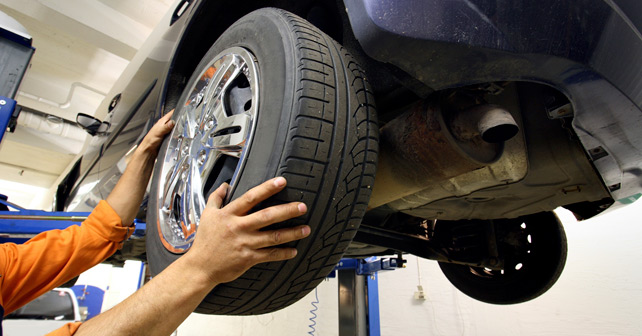We know that you all love your cars, but like cars, the tyres are to be loved too. Tyres in good condition translate into better driving experience and road safety as well. Here are some simple tips to ensure prolonged tyre life.
Tyres are the only point of contact between your vehicle and the road, therefore preserving them is important. You can easily do this by regularly checking tyre treads, air pressure and search for any sidewall damage. Following tips will help you maintain your tyres and let you enjoy a pleasurable drive.
CHECK TYRE PRESSURE
Firstly, you must check tyre pressure on a regular basis using a suitable device. Tyre pressure affects almost every facet of the way a car behaves including fuel consumption, emissions, acceleration, braking and cornering. An under-inflated tyre adversely affects driving stability, causes high fuel consumption and may even harm the suspension. Over-inflated tyres aren’t ideal either as they lead to reduced traction and increased tyre wear.
TYRE ROTATION
Tyre rotation refers to moving around the tyres to improve tyre performance and increase their life expectancy. Ideally, tyres should be rotated every 6,000-8,000 km. The pattern of rotation depends on the engine layout. For instance, a front-wheel-drive car is likely to put more load on the front tyres, requiring them to be interchanged with those placed in the rear. As compared to this, four-wheel-drive cars put equal load on each tyre and one may slot any used tyre in place of another.
WASH TYRES AND WHEELS
Slush, debris or other particles may accumulate on the surface of the tyre, causing the rubber to deteriorate prematurely. Therefore, it is advisable to clean the tyres and the wheels in soap water on a regular basis. Avoid using petroleum-based chemicals or other solvents as they may harm the rubber.
CHECK TREAD DEPTHS
Sufficient tread depths is essential for road safety, particularly during winters and the autumn season. Worn tyres are more prone to losing traction in the snow and on wet roads. Uneven tyre wear is also a cause of worry as it indicates the need for suspension repair or wheel alignment. Both of them play a role in extending the tyre life.
SPARE TYRE CHECK
The spare tyre always comes handy in case of emergency. Therefore, it is equally important to keep it in perfect shape. It should be checked for tyre pressure, tyre treads etc.
WHEEL ALIGNMENT
It refers to the measurement of complex suspension angles and the adjustment of a variety of suspension components as per manufacturer’s guidelines. If your car seems to be drifting from one side to another, even if you’re driving straight, it is advisable to get the wheels aligned.
It is slightly complicated but just as necessary for perfect vehicle control and even tyre wear. A vehicle is said to be properly aligned when all suspension and steering components are sound and when tyre and wheel assemblies are running straight and true. Proper alignment is necessary for even tread wear and precise steering.
REPAIRS
It is crucial to know when it is okay to have a tyre repaired and when a tyre should be replaced. If a tyre loses its air pressure, it must be removed from the wheel for a complete internal inspection to be sure it is not damaged. Tyres that are run even a short distance while flat are often damaged beyond repair. Most punctures and nail holes can be repaired by trained technicians as long as the damage is confined to the tread. Do not repair any sidewall puncture or tyres with tread punctures larger than 1/4 inch. Also, never repair tyres which are worn below 1/16 inch of tread depth.
DAILY CHECK
Every morning before starting the vehicle, check the exterior of your tyre. If the damages exposing the ply cord and/or steel belt are visible, remove the tyre and consult with a tyre specialist. Remove stones or nails which are entrapped in the tread of the tyre.






























Write your Comment